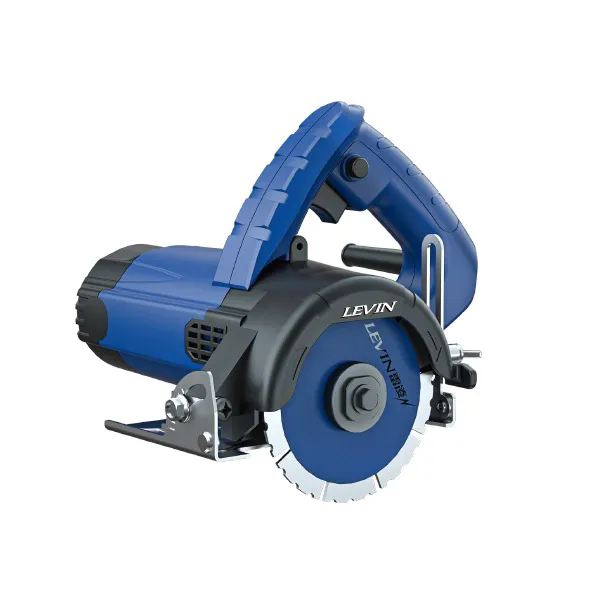Why Is a Cutting Machine an Essential Tool for Modern Manufacturing?
2024-11-13
In the world of modern manufacturing, precision and efficiency are key to staying competitive. Whether you're in the automotive, textile, or packaging industries, one tool that plays a critical role in ensuring high-quality production is the cutting machine. From slicing raw materials into precise shapes to ensuring smooth, clean edges, cutting machines are integral to a wide variety of production processes. But what exactly makes cutting machines so essential in today’s manufacturing environment?
In this blog, we'll explore the different types of cutting machines, their uses, and why they are such a vital investment for companies that rely on high-quality and precise cuts.
What Is a Cutting Machine?
A cutting machine is a piece of equipment designed to cut, shape, or trim materials into specific sizes or designs. These machines can handle a wide range of materials, including metals, plastics, textiles, wood, and paper, depending on the type of machine and the cutting process involved. There are various methods of cutting, such as laser cutting, water jet cutting, plasma cutting, and mechanical cutting, with each offering different advantages based on the material being cut and the level of precision required.
The right cutting machine can dramatically increase production efficiency, reduce waste, and improve product quality, making it an indispensable tool in numerous industries.
Why Are Cutting Machines Important in Manufacturing?
1. Precision and Accuracy
One of the primary reasons cutting machines are so widely used is their ability to achieve high precision. In industries like automotive manufacturing, electronics, and aerospace, precision cutting is crucial to ensure that parts fit perfectly and function properly. A slight miscut could lead to a malfunction, safety hazard, or costly production errors. Modern cutting machines are equipped with advanced technologies, such as CNC (Computer Numerical Control), which allow for highly accurate cuts that can be repeated consistently across large production runs.
Cutting machines offer the precision that manual cutting methods cannot match, ensuring uniformity and quality across all items produced.
2. Increased Efficiency and Speed
Manual cutting methods, like using hand tools or basic saws, can be time-consuming and labor-intensive. Cutting machines, on the other hand, allow for automated cutting, which dramatically reduces the time required to make each cut. Automated systems can operate continuously, meaning large volumes of materials can be processed with minimal human intervention. This increases overall efficiency, helping businesses meet tight deadlines and manage higher production demands.
For example, in industries like packaging or textiles, where high-volume cutting is needed, using cutting machines reduces human error and increases throughput, significantly improving productivity.
3. Versatility Across Different Materials
Cutting machines are incredibly versatile and can be used to cut a variety of materials with ease. Laser cutters, for instance, can slice through metals, plastics, and wood with exceptional precision, making them ideal for industries like electronics, automotive, and furniture. Similarly, water jet cutters can handle thicker materials such as stone, glass, and composite materials, making them popular in industries like construction and aerospace.
By having a cutting machine capable of handling multiple materials, businesses can diversify their production capabilities without needing to invest in different types of equipment for each material type.
4. Improved Safety
Cutting machines offer significant safety advantages over manual cutting methods. When operated correctly, they reduce the risk of accidents such as cuts, burns, and repetitive strain injuries that are common with hand tools. Many cutting machines come with built-in safety features like protective shields, emergency stop buttons, and automatic shutoff systems to prevent injury. Additionally, automated machines reduce the amount of direct interaction between workers and the cutting process, further enhancing safety in the workplace.
Ensuring that workers are kept safe while improving productivity is one of the key reasons businesses invest in cutting technology.
5. Minimization of Waste
Cutting machines help reduce material waste by providing precise cuts that maximize the use of the raw materials being processed. With advanced cutting technologies, such as CNC routers or laser cutters, businesses can achieve tight tolerances and avoid unnecessary scrap material. By cutting materials efficiently, businesses can reduce overall production costs and increase profit margins. Furthermore, many modern cutting machines come equipped with optimization software that helps determine the most efficient cutting patterns, ensuring minimal waste during the cutting process.
This waste reduction is particularly important in industries where raw materials are expensive, such as the automotive, aerospace, and construction sectors.
Types of Cutting Machines and Their Applications
There are several types of cutting machines available, each suited to different materials and production needs. Here are some of the most commonly used cutting machines in the industry:
1. Laser Cutting Machines
Laser cutting is one of the most advanced cutting methods, known for its high precision and versatility. Laser cutters use a concentrated beam of light to cut through a variety of materials, including metals, plastics, and wood. They are ideal for industries that require intricate cuts, such as electronics, signage, and jewelry. Laser cutting is also great for producing fine details or patterns, making it a popular choice for prototyping and design work.
2. Water Jet Cutting Machines
Water jet cutting is a versatile method that uses a high-pressure jet of water (sometimes mixed with abrasive materials) to cut through thick or hard materials. It is commonly used in industries like aerospace, automotive, and construction, as it can cut materials that are too thick for traditional methods like laser or plasma cutting. Water jet cutters are also particularly useful for materials that can be damaged by heat, such as food, glass, or rubber.
3. Plasma Cutting Machines
Plasma cutting is an effective method for cutting metals, especially thicker metals like steel or aluminum. It uses a high-temperature plasma arc to melt and cut through the material. Plasma cutters are often used in industries like metal fabrication, construction, and shipbuilding, where high-speed cutting of metals is required. Plasma cutting machines are typically faster and more cost-effective than laser cutting for thick metal sheets.
4. CNC Routers
CNC routers are automated cutting machines used primarily for cutting wood, plastics, and soft metals. They are often used in industries such as furniture making, signage production, and woodworking. CNC routers are extremely versatile and can handle a range of tasks, from engraving to carving, and can be programmed to execute precise cutting patterns.
5. Shearing Machines
Shearing machines use a pair of blades to cut through materials like sheet metal and plastic. These machines are ideal for tasks that involve cutting straight lines through thin sheets or plates of material. Shearing machines are commonly used in the metalworking industry to create flat sections of metal from large rolls or plates.
Conclusion
Cutting machines are more than just tools—they are critical components of the modern manufacturing process. Offering precision, efficiency, versatility, and safety, these machines play an essential role in industries that demand high-quality, consistent results. Whether you're cutting metals, plastics, textiles, or wood, there is a cutting machine designed to meet your specific needs. Investing in a cutting machine can streamline your production processes, reduce waste, increase safety, and help you stay competitive in today’s fast-paced industrial landscape.
As technology continues to advance, the cutting industry will likely see even more innovations, making these machines even more efficient and capable of handling complex tasks with greater ease.



